“Purple/black; complex nose of balsamic, herbs, spice box, blueberry; easy-going, no hard edges.”
90 Points The Wine Advocate / Pricing; $12.00-18.00
 LaMadrid Reserva Bonarda 2009
LaMadrid Reserva Bonarda 2009
I have enjoyed a multitude of different wines from this great winemaker from vintages; 2008,2009, 2010. Never disappointed!
90 points (’10), Wine Advocate:
“nose of underbrush, mineral, plum, mulberry, and violets. Concentrated on the palate with good depth, balance, and length, this flavorful effort deftly combines elegance and power, quite an achievement at this price point.”
Price range; $14.00-$18.00
 MontGras Reserva Carmenere 2011
MontGras Reserva Carmenere 2011
Noted: Surprisingly smoother than the Casa Silva [above] and at a 2011 vintage. I was impressed.
Introduced from France in the 1800s, Carmenère has developed a unique personality in the “terroir” of Chile, which is today the only significant source of this uncommon varietal grape. The MontGras vineyards, in the Colchagua Valley, are in the heart of the Chilean wine country. The climate is typically Mediterranean, favouring the production of rich concentrated red wines.
Color: Deep violet red Bouquet: Powerful aromas of spices, wild herbs and vanilla. Taste:Well-rounded, with subtle fruit flavors and soft tannins leading to a velvety finish.
Price; $13.00
Folie à Deux Chardonnay 2010

Noted; a nice golden color. On the nose; yeast/minerality, tropical fruit [pineapple], tree fruit [apple] and melon. Also a slight honey aroma. Its rich flavor supplied nice acidity and a slight buttery taste on the palate with slight oak. As the wine warmed vanilla was also noted. This is a good chardonnay for those who like some wood and butteriness in their selection.
Composition:100% Chardonnay Oak:Combination of French & American oak barrels (22% new) for five months
Fermented and aged in French oak barrels to preserve the wine’s rich, vibrant fruit character, this quintessential Russian River Chardonnay is a joyful dance of sun, sea and soil. Seductive, complex aromas of honey, green apple, tropical fruits, vanilla and baking bread introduce juicy apple, pineapple and tropical fruit flavors with light butter notes from partial malolactic fermentation and crisp balancing acidity.
Price: $16-18.00
 Beringer Chenin Blanc 2010
Beringer Chenin Blanc 2010
A tasty treat we served between dinner and dessert. Most expected this to be a sweet wine and were pleasantly surprised that it was somewhat dry instead. I am very impressed with the quality and price point of this wine.
Winemaking Notes Gentle handling and careful attention is given to the Chenin Blanc grapes from the vine to the glass. To retain the delicate varietal flavors, Beringer’s winemakers chill the juices immediately following crush and continue to closely monitor the temperature throughout fermentation. Just before dryness, they cool the juices even further to halt fermentation and retain a smooth, lush mouthfeel and lingering finish.
Tasting Notes The California Collection Chenin Blanc is a well-balanced wine with aromas and flavors of crisp citrus, melon, and spicy ginger. It’s meant to be enjoyed with a variety of foods, from Asian and Mexican foods to a casual backyard barbecue with friends.
Price: $5-7.00
Pascual Toso Malbec Mendoza Reserve Barrancas Vineyards 2009
 A well-oaked wine with pencil-shaving aromas yielding to coconut and subtle black fruit notes. The palate is dense, structured and full of cherry, cassis and clove flavors.
A well-oaked wine with pencil-shaving aromas yielding to coconut and subtle black fruit notes. The palate is dense, structured and full of cherry, cassis and clove flavors.
Winemaker notes; This Alta Reserva has a complete harmony of color with a deep, bright red combining with violets hints. Characterized by fruity aromas, blackberry and spices, the mouth has sweet tannins with the presence of spices from oak. All these notes give persistent elegance and complexity to this wine.
Wine Spectator
Quite ripe and flashy, displaying lots of spice, licorice and mocha notes up front, backed by fleshy plum sauce, boysenberry preserve and currant paste notes. Stays nicely layered and focused through the finish. An excellent effort for the vintage. Drink now through 2012. 150 cases imported.
Score: 91. —James Molesworth, December 15, 2010.Price: $18.00
 Frei Brothers Reserve Dry Creek Merlot 2010
Frei Brothers Reserve Dry Creek Merlot 2010
I was glad to see this wine served on a Saturday night dinner outing. We sell it at the store and I have looked forward to trying it. It did not disappoint. Everything a Merlot should be with the help of a few other varietals to soften the edges [see varietal content below].
The 2010 Dry Creek Valley Merlot captures the rich, ripe flavors of the Dry Creek Valley terroir. Aromas and flavors of red licorice, Satsuma plums, red fruit jam and blackberry meld with hints of toasted oak, milk chocolate and medium-roasted coffee. This medium-bodied wine delivers excellent structure and an elegant finish.
Winemaking Notes
For our 2010 Dry Creek Valley Merlot, we co-crushed the Merlot grapes with Petite Sirah to achieve dark fruit flavors and enhance the overall tannic structure in the wine. The grapes were destemmed, but not crushed, before being cold soaked to extract vivid color and intense flavors. We fermented this wine at warm temperatures, reaching 90°F for a few hours, to create a darker, riper fruit profile. The wine underwent malolactic fermentation and was aged on fine lees to soften the mouthfeel. This Merlot was aged for seven months in a combination of French and American oak barrels to impart notes of chocolate and vanilla in the finished wine.
Price: $16.00-$22.00
Technical Notes
| Appellation: |
Dry Creek Valley |
| Varietal Content: |
88% Merlot, 8% Cabernet Sauvignon, 4% Petite Sirah |
 Alexander Valley Vineyards 2009 Cabernet Sauvignon
Alexander Valley Vineyards 2009 Cabernet Sauvignon
Description;
Alexander Valley Vineyards Estate Cabernet Sauvignon was one of the first wines we produced in 1975 and three and a half decades later it is still our flagship wine. From the beginning our Cabernet stood apart from other California cabs because it was an elegant old world style wine.The climate in the southern end of the valley defines our Estate Cabernet Sauvignon. Warm days during the growing season allow the grapes to ripen evenly and develop flavor. The fog rolls in before sunrise each morning, lowering the temperature; which cools the grapes and maintains the acidity. Our estate vineyards are home to all five Bordeaux grapes, planted on the terraces, bench lands and hillsides of our valley where the soil is predominately a gravelly clay loam. Water from irrigation and precipitation drains away quickly, which allows the vines to be stressed, leading to smaller grapes and lower yields with more concentrated flavors. Each lot is picked, crushed and fermented separately to maximize complexity. We barrel age for 14 months, then blend to create a complex Cabernet Sauvignon that is enjoyable as soon as you pull the cork.
2009: 90 points & Editors Choice Wine Enthusiast Price: $22.00
| Appellation |
Alexander Valley |
| Grape Varietal |
92% Cabernet Sauvignon – 4% Cabernet Franc – 2% Merlot – 1% Malbec -1% Petit Verdot |
| Barrel Regimen |
Aged for 14 months in French and American oak, 25% new |
| Release Date |
May 2011 |
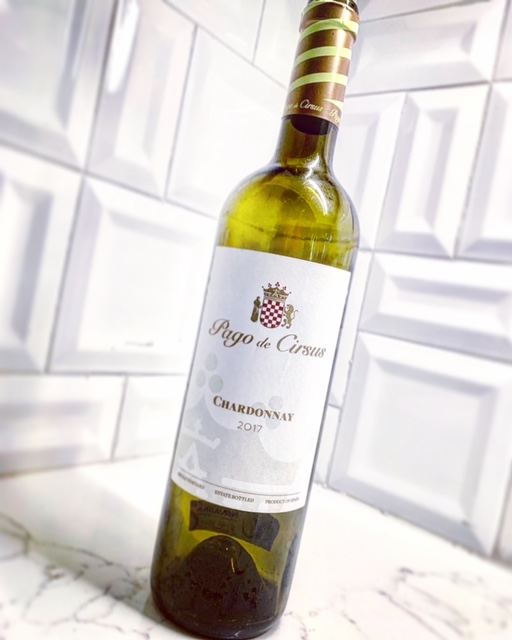 In preparation for a vacation throughout central and northern Spain my vino-loving friends decided to introduce me to the wines of Pago de Cirsus from the region of Navarra. As luck would have it they had me at Navarra, a denomination of origin or region in central-northern Spain that I favor and neighbors the better-known Rioja. I hate to generalize, but I can honestly say that I have never had a bad wine from the Navarra area.
In preparation for a vacation throughout central and northern Spain my vino-loving friends decided to introduce me to the wines of Pago de Cirsus from the region of Navarra. As luck would have it they had me at Navarra, a denomination of origin or region in central-northern Spain that I favor and neighbors the better-known Rioja. I hate to generalize, but I can honestly say that I have never had a bad wine from the Navarra area.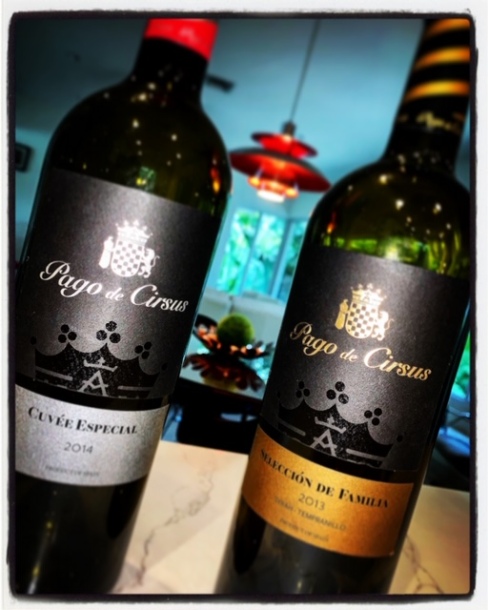 Pago de Cirsus 2013 Seleccion de Familia; 85% Syrah, 15% Tempranillo. Fermented in French oak vats, then 14 months in new French oak barrels. Aged three years.
Pago de Cirsus 2013 Seleccion de Familia; 85% Syrah, 15% Tempranillo. Fermented in French oak vats, then 14 months in new French oak barrels. Aged three years.

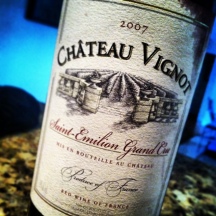

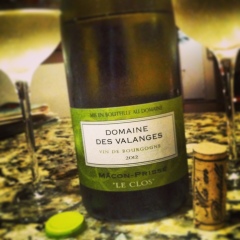








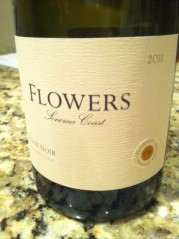















 A well-oaked wine with pencil-shaving aromas yielding to coconut and subtle black fruit notes. The palate is dense, structured and full of cherry, cassis and clove flavors.
A well-oaked wine with pencil-shaving aromas yielding to coconut and subtle black fruit notes. The palate is dense, structured and full of cherry, cassis and clove flavors.  Frei Brothers Reserve Dry Creek Merlot 2010
Frei Brothers Reserve Dry Creek Merlot 2010

